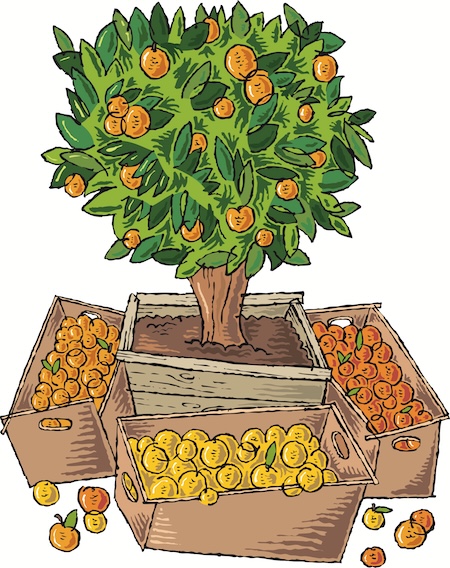Drying, salting and smoking are the trinity of ancient methods to preserve a harvest. Of the three, drying is the simplest. Here are a few quick tips to finding the best tasting dried fruit.
Was it grown where it was dried?
To get the most flavor out of your fruit you want to pick it ripe. But as we all know, ripe fruit is fragile. It doesn’t travel well. Once a ripe fruit is picked it rarely gets any better and far more likely gets worse. The best dried fruit is made where they are grown, with minimal travel and storage time between plucking and preserving.
Did they add anything to it?
You don’t need to add anything when you dry fruit. At the most, some producers might a bit of citrus or citrus extract to stop oxidization (browning), keep the color brighter, that kind of thing. Anything beyond that and you gotta ask: why? Why the smoked chipotle powder? Why the added sugar? Those of us who’ve spent a long time tasting foods are always suspect when companies start adding flavors to foods that should taste good on their own. Sometimes the new flavors work, that’s great. But often they’re there to make some marketing razzle dazzle or, at worst, cover up something that didn’t taste good to begin with.
If it was cut, how did they cut it?
Small fruits like grapes and mulberries can be dried whole, but bigger fruits like mangoes or guavas need to be cut up before drying. Cutting the fruit into smaller bits and shreds can allow you to discard any bruised or damaged bits of fruit, but it also often makes for tougher texture. To keep the fruit in larger pieces, you have to start with fruit that’s in excellent, unbruised condition. Larger, thicker pieces generally have a softer texture.
How far did they dry it?
This is the one that separates the good dried fruit from the great. You can dry a little or you can dry a lot. A little and you’ve got a fruit that’s soft, plump, maybe even a little juicy. A lot and you’ve got chewy leather. It’s easiest to cut everything small, turn the oven up, walk away, and have it done—to dry it a lot. But fruits come in at different ripenesses, different water contents. They need TLC if you want to make something that tastes great and has a luscious texture.
Let’s talk about candied fruit, too.
There’s another way to preserve a fruit harvest: use sugar. You can cook fruits with sugar to make jam or marmalade. Or, if you’re feeling luxe and have a lot of sugar on hand, you can candy them. When you candy a fruit you basically soak it in a way where there parts of the fruit that can rot are replaced with sugar that is shelf stable. Historically, candying was an exorbitant treat because cane sugar cost an arm and a leg. That’s why we see so many candied fruits at Christmas—like Italy’s candied fruit-studded holiday cake, panettone—when a splurge was in order.

